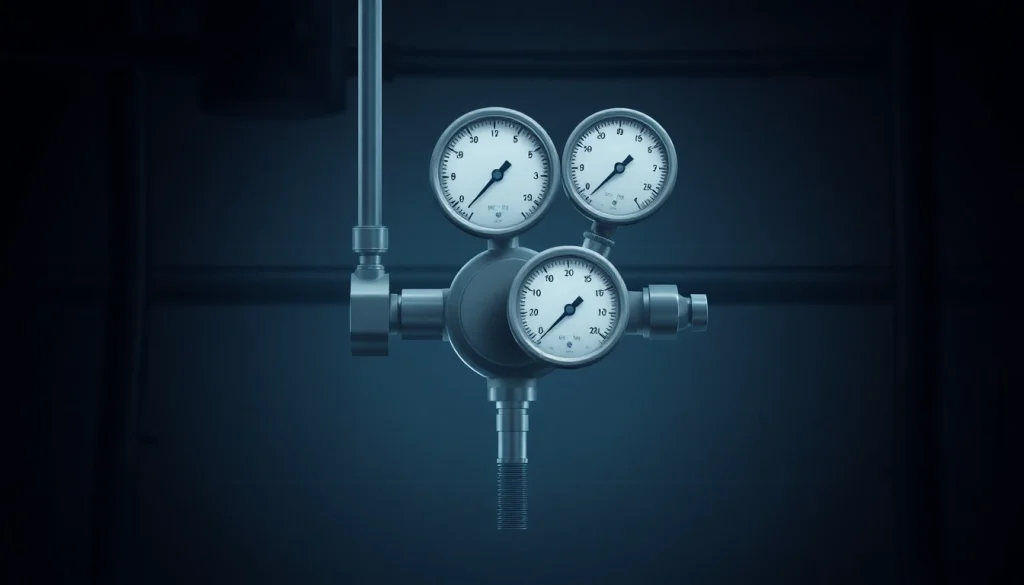What is a Nitrogen Regulator?
A nitrogen regulator is an essential device used to control the flow of nitrogen gas from a pressurized cylinder or source. By regulating the pressure and flow rate, these devices enable users to utilize nitrogen safely and efficiently in various applications across different industries. The importance of nitrogen regulators cannot be overemphasized in sectors like welding, refrigeration, food and beverage, and laboratory settings where precise control of gas pressure is critical.
For those seeking to explore specific options available in the market, you can find a variety of nitrogen regulators at nitrogen regulator listings that cater to specific needs.
Basic Functions of a Nitrogen Regulator
The primary function of a nitrogen regulator is to decrease the high pressure from the gas cylinder to a safe working pressure for specific applications. Moreover, it ensures that the output pressure remains constant and can be adjusted according to the specific requirements of the task at hand. Nitrogen regulators are equipped with gauges that display both the incoming cylinder pressure and the outgoing pressure, allowing users to monitor and adjust as needed.
Components of a Nitrogen Regulator
A typical nitrogen regulator consists of several key components:
- Inlet Connection: The entry point for nitrogen gas from the cylinder, often utilizing a CGA fitting.
- Pressure Gauge: This displays the cylinder pressure and the downstream pressure setting.
- Adjustable Control Valve: Enables users to set the desired outlet pressure.
- Outlet Connection: The point from where nitrogen gas exits the regulator towards the application.
- Relief Valve: Provides a safety measure to release excess pressure, preventing potential accidents.
Applications in Various Industries
Nitrogen regulators are widely utilized across various industries, including:
- Welding: Used to control the nitrogen flow in shielding gas systems for MIG and TIG welding, ensuring a clean, oxidation-free weld.
- Food and Beverage: Employed in the beverage industry for nitrogen-powered drinks, ensuring carbonation without altering the beverage’s flavor profile.
- HVAC: Utilized in pressure testing and system evacuation, ensuring proper nitrogen purging of HVAC systems.
- Laboratories: Essential in many laboratory settings for controlled environments and experiments requiring inert gas.
How to Choose the Right Nitrogen Regulator
Selecting the proper nitrogen regulator is a crucial decision that can significantly affect the efficiency and safety of operations. Several factors should be considered:
Pressure Rating and Output Specifications
Different applications may require different pressure ratings. Be sure to choose a nitrogen regulator that can handle the maximum pressure of the nitrogen cylinder in use. Consider if a single-stage or dual-stage regulator is more suitable for your needs:
- Single-Stage Regulators: These are better for applications with stable pressure needs, offering simplicity and reliability.
- Dual-Stage Regulators: Ideal for applications where pressure fluctuates significantly, as they maintain a more stable output pressure.
Types of Nitrogen Regulators
Nitrogen regulators come in various styles and functionalities to fit specific applications. Main types include:
- Standard Pressure Regulators: Commonly used in many industries, suitable for general applications.
- Precision Regulators: Designed for applications requiring finely-tuned pressure control.
- High-Pressure Regulators: Capable of managing higher pressures, often utilized in industrial settings.
Considerations for Specialized Uses
For specialized applications, consider features such as:
- Material compatibility with nitrogen to prevent corrosion or contamination.
- Specific outlet connections for compatibility with other equipment.
- Flow rate capacity to ensure it meets application demands.
Using a Nitrogen Regulator Safely
Safety is paramount when working with gases and regulators. Follow proper procedures to minimize risks associated with pressurized gas:
Setting Up Your Nitrogen Regulator
Before setting up your nitrogen regulator:
- Verify that all connections are tight and leak-free.
- Confirm that the regulator is rated for the pressure you plan to use.
- Ensure all components are in good condition and free from damage.
Common Safety Procedures
Implement safety protocols, such as:
- Wearing appropriate personal protective equipment (PPE).
- Using the regulator in well-ventilated areas to prevent gas buildup.
- Following manufacturer’s instructions for operation and maintenance.
Troubleshooting Tips
If issues arise, consider these troubleshooting steps:
- Check for leaks using a soap solution; bubbles indicate leaks.
- Verify gauges are functioning correctly and replace if faulty.
- Ensure outlet pressure settings align with application requirements.
Maintenance for Optimal Performance
To ensure your nitrogen regulator operates optimally, routine maintenance is essential:
Cleaning and Inspection Guidelines
Regularly clean your nitrogen regulator to remove particles or contaminants that could affect performance. Inspect it for:
- Signs of wear or corrosion.
- Tightness of fittings and connections.
- Gauge functionality and accuracy.
Replacing Parts When Necessary
Identify components that may require replacement, such as:
- Seals and O-rings that may wear out over time.
- Gauges that are no longer providing accurate readings.
- Other damaged parts that can compromise safety.
Understanding Wear and Tear
Awareness of the lifespan of components is critical. Regularly assessing the condition of your nitrogen regulator helps extend its life and minimize risk. Monitoring usage frequency and adjusting maintenance schedules accordingly can lead to better performance and reliability.
Innovations in Nitrogen Regulation Technology
As technology advances, nitrogen regulators have seen several innovations that enhance their functionality and ease of use:
Advancements in Valve Design
Modern nitrogen regulators feature advanced valve designs that improve flow characteristics, reduce pressure drop, and enhance precision control. These advancements allow for more efficient gas delivery systems where minimizing waste is crucial.
Smart Nitrogen Regulators
Smart technology is entering the realm of nitrogen regulators with digital gauges and automated pressure adjustments. These devices can be linked to systems that monitor and control pressure, providing data analytics for better management and predictive maintenance.
Future Trends to Watch
The future of nitrogen regulation technology may focus on:
- Increased automation in gas delivery systems for improved efficiency.
- Integration of IoT technology for real-time monitoring and resource management.
- Greater emphasis on safety features, enhancing fail-safes and emergency shut-off mechanisms.
